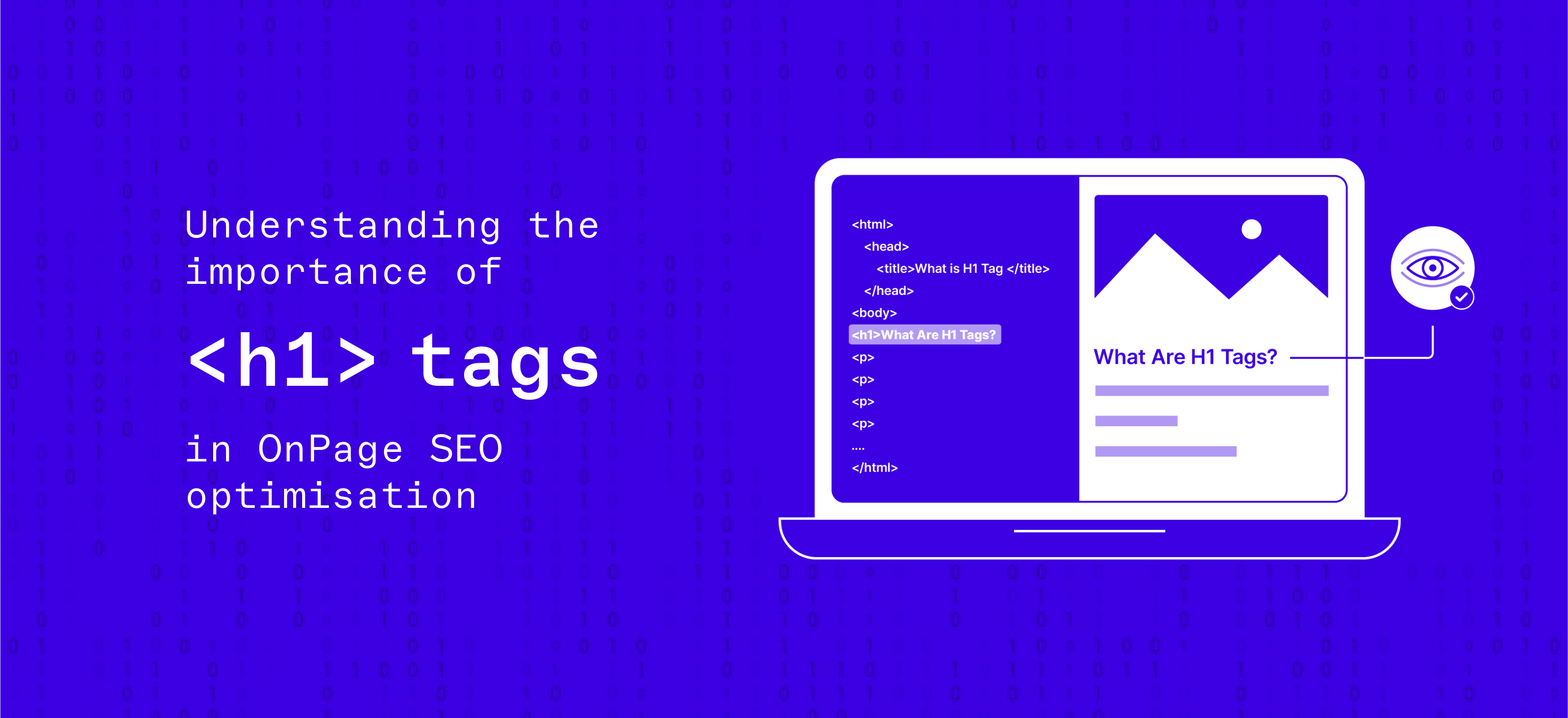
In the vast digital arena, websites require attention, competing for eyeballs and clicks in search engine results pages (SERPs). One crucial element that can significantly impact your website’s ranking and user experience is the H1 tag.
But what exactly is an H1 tag, and why is it so important for on-page SEO optimization? Why do digital marketers stress out so much on having a complete H1 Tags for each page of the website and how these can be leveraged to get the best results in SERP. Any top website development company with a decent digital marketing team, might be able to address this issue or even better that they might design the website in a way where this issue doesn’t even arise on the first hand.
H1 Tags: The Main Event
H1 tags, also known as heading tags or title tags within an HTML document, act as the main headline for your webpage. They’re typically the largest and most prominent text on the page, immediately grabbing the reader’s attention and conveying the central theme of your content.
Think of your H1 tag as the title of a newspaper article. It should be clear, concise, and accurately reflect the content that follows.
Why H1 Tags Matter
H1 tags play a critical role in both on-page SEO and user experience (UX). Here’s a breakdown of their significance:
Search Engine Signal:
Search engines like Google use H1 tags to understand the content and purpose of your webpage. A well-optimized H1 tag containing relevant keywords can improve your ranking for those keywords in search results.
User Experience:
H1 tags provide immediate context for users landing on your page. A clear and descriptive H1 tag lets visitors know instantly if they’ve found the information they’re seeking, improving user engagement and reducing bounce rates (the percentage of visitors who leave a webpage without taking any action).
Content Structure:
H1 tags establish a hierarchy for your content. They act as the main heading, with subheadings (H2, H3, etc.) branching out to provide further details and structure. This clear organization enhances readability and makes it easier for users to navigate your webpage.
Creating perfect H1 Tags:
Now that you understand the importance of H1 tags, let’s look into some best practices for crafting compelling and SEO-friendly titles for your webpages:
Keyword Integration: While not the sole focus, strategically including relevant keywords in your H1 tag can signal topic relevance to search engines. However, prioritize natural language over keyword stuffing.
Clarity and Concision:
Keep your H1 tag clear, concise, and easy to understand. Aim for a length between 50-60 characters to ensure optimal display in search results.
Uniqueness:
Each webpage should have a unique H1 tag that accurately reflects its content. Avoid duplicate H1 tags, as this can confuse search engines.
Benefit-Driven Approach:
Consider incorporating the benefits your content offers into your H1 tag. This can increase user interest and encourage them to look deeper.
Target Audience:
Create your H1 tag with your target audience in mind. Use language that resonates with them and addresses their pain points or interests.
Tips for H1 Tag
Here are some additional tips to optimize your H1 tag usage:
Only One H1 Tag per Page:
Stick to one H1 tag per webpage. Having multiple H1 tags can confuse search engines and dilute the impact of your main heading.
H1 Tag Placement:
Ideally, place your H1 tag near the top of your webpage, above the fold (the visible area without scrolling). This ensures users see it immediately.
Mobile-Friendliness:
Ensure your H1 tag is optimized for mobile devices. Since many users access websites on their phones, readability on smaller screens is crucial.
By following these guidelines and understanding the importance of H1 tags, you can create compelling headlines that not only boost your SEO efforts but also improve the overall user experience on your website. Remember, your H1 tag is website’s first impression – ensure that it’s created in the best possible way and make sure that other best SEO practices are followed.



